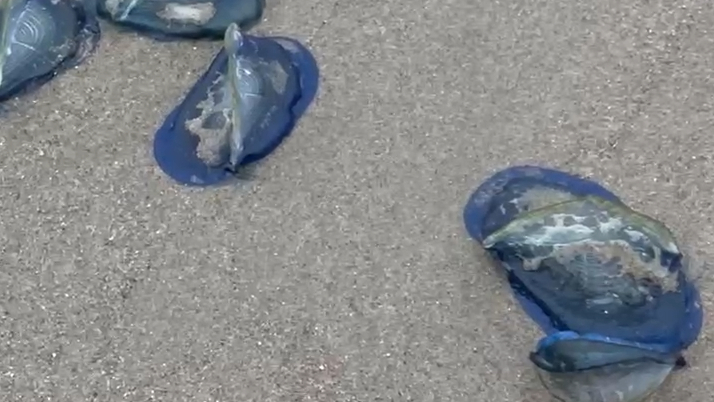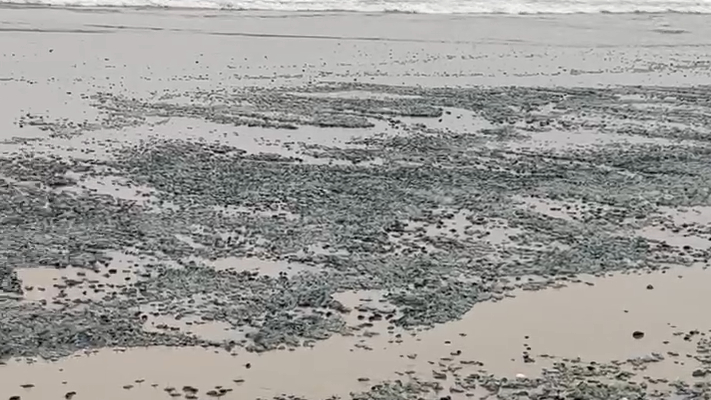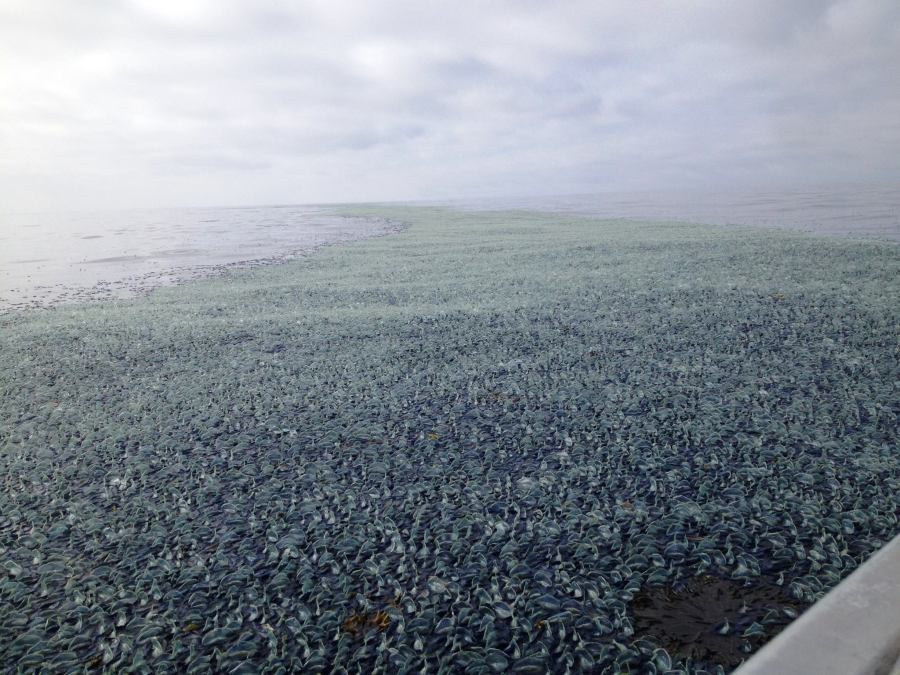Blue, jellyfish-like blobs known as by-the-wind sailors, or Velella velella, continue to wash ashore by the millions along Southern California’s coast this week. While it might look like a massive die-off or another catastrophic event, experts say it is perfectly natural and normal.
“We’ve seen (Velella velella) colonies wash up along our coastline over the years,” said Cassandra Davis, manager of volunteer programs at the Aquarium of the Pacific in Long Beach. “In 2014 and 2015, trillions of them washed up along the eastern Pacific coast.”
By-the-wind sailors are a type of hydrozoa that feed primarily on plankton and closely resemble the Portuguese man o’ war. One of their nicknames is “little sail” since they have a small, stiff sail that catches the wind and allows them to travel great distances across the world’s oceans.
“They wash up in large numbers because they’re drifting in the wind and go wherever it takes them,” Davis says. “In this case, that’s California’s coast.”
Bruno Pernet, a professor of biological sciences at California State University Long Beach, says the orientation of their sails, either “right-handed” or “left-handed,” often dictates where they travel.
“When the wind blows, they sail downwind, but often at an angle to that wind,” Pernet told KTLA. “They split off in different directions and organize themselves in big groups of the same kind of sail orientation.”
On Tuesday, a KTLA viewer shared a video from Emma Wood State Beach in Ventura County that showed piles of the creatures covering hundreds of yards of shoreline.
After seeing the footage, Pernet believes the Velella velella landing on California’s beaches this week have mostly “left-handed” sails.
Since they carry a toxin and have very little meat, Pernet said Velella velella have very few predators in the ocean and even fewer on land. He says sunfish eat them, and birds and turtles have also been known to consume them from time to time.

The millions that have washed ashore in California this week will either rot away or be pulled back into the ocean by the tide. For now, Pernet said, people should enjoy viewing this natural phenomenon while it lasts.
“They’re amazing animals. They’re like space aliens or something that have invaded our beaches, but they’re not going to be here for very long,” he said.















